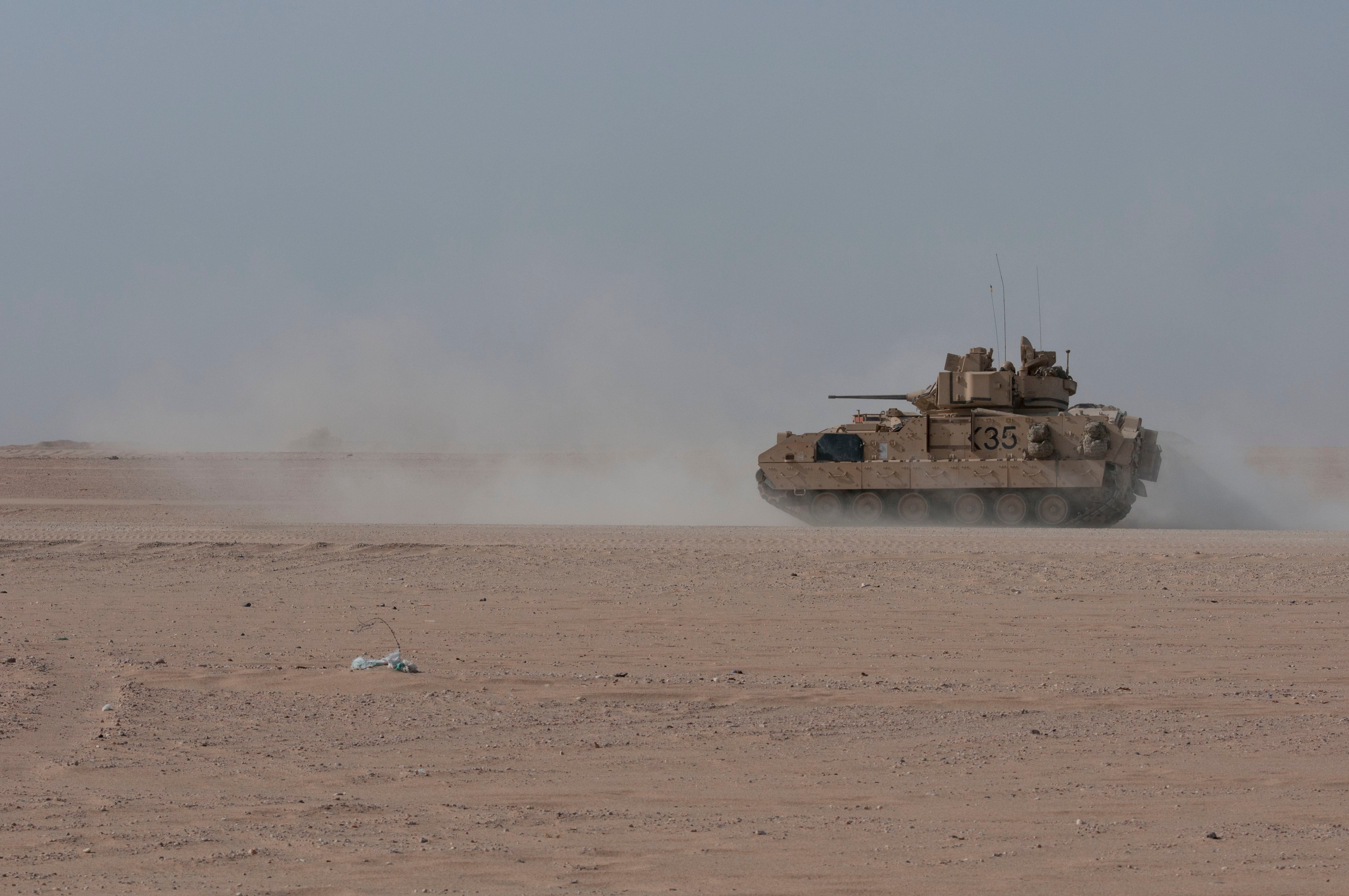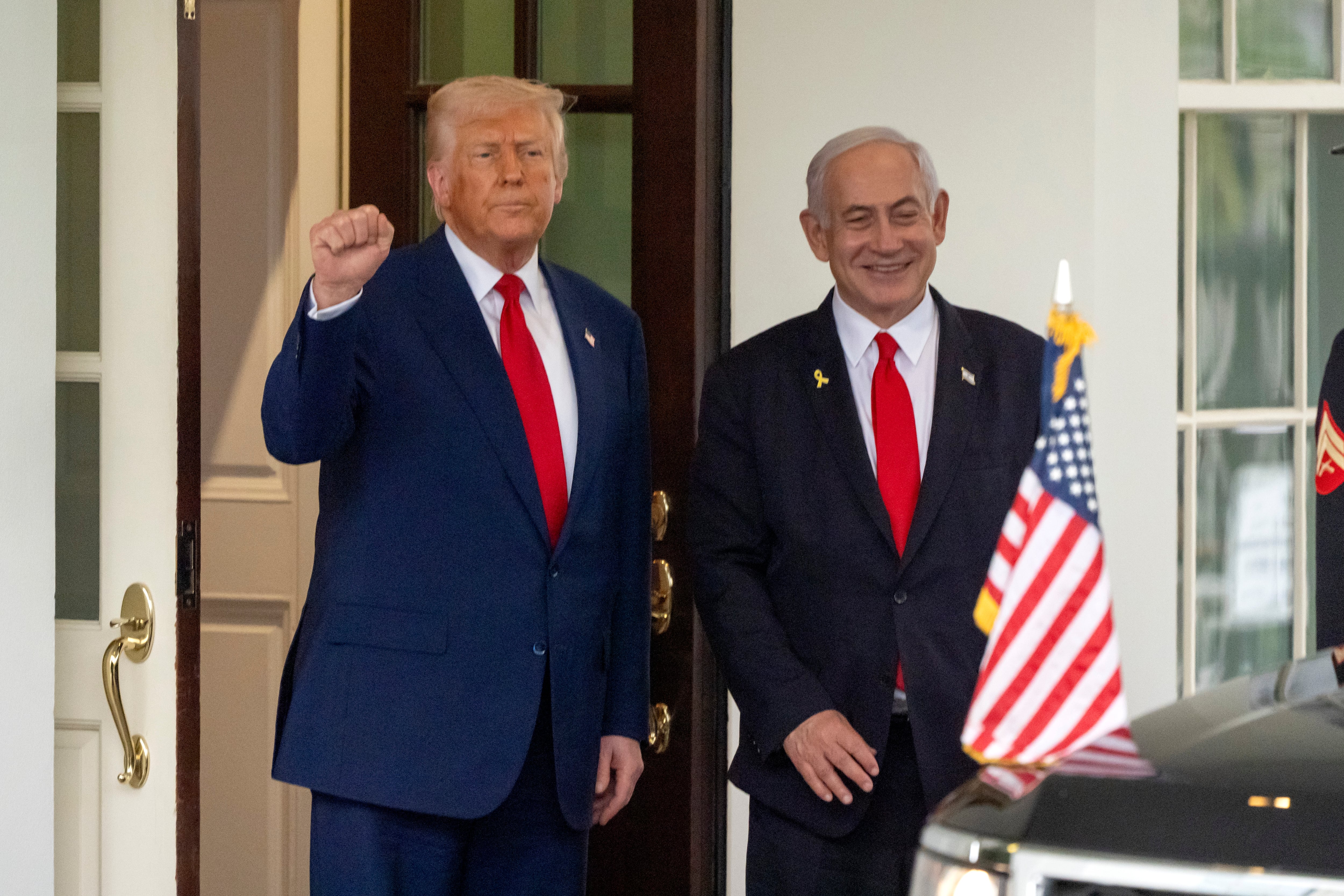WASHINGTON — President Donald Trump has approved an expanded military mission to secure an expanse of oil fields across eastern Syria, raising a number of difficult legal questions about whether U.S. troops can launch strikes against Syrian, Russian or other forces if they threaten the oil, U.S. officials said.
The decision, coming after a meeting Friday between Trump and his defense leaders, locks hundreds of U.S. troops into a more complicated presence in Syria, despite the president’s vow to get America out of the war. Under the new plan, troops would protect a large swath of land controlled by Syrian Kurdish fighters that stretches nearly 90 miles (150 kilometers) from Deir el-Zour to al-Hassakeh, but its exact size is still being determined.
Officials said many details still have to be worked out. But, Trump’s decision hands commanders a victory in their push to remain in the country to prevent any resurgence of the Islamic State group, counter Iran and partner with the Kurds, who battled IS alongside the U.S. for several years. But it also forces lawyers in the Pentagon to craft orders for the troops that could see them firing on Syrian government or Russian fighters trying to take back oil facilities that sit within the sovereign nation of Syria.
The officials spoke on condition of anonymity in order to discuss internal deliberations.
Trump’s order also slams the door on any suggestion that the bulk of the more than 1,200 U.S. troops that have been in Syria will be coming home any time soon, as he has repeatedly promised.
RELATED

Sen. Tim Kaine, a Virginia Democrat, called the mission misguided.
“Risking the lives of our troops to guard oil rigs in eastern Syria is not only reckless, it’s not legally authorized,” Kaine told The Associated Press. “President Trump betrayed our Kurdish allies that have fought alongside American soldiers in the fight to secure a future without ISIS — and instead moved our troops to protect oil rigs.”
The Pentagon will not say how many forces will remain in Syria for the new mission. Other officials, also speaking on condition of anonymity to discuss ongoing deliberations, suggest the total number could be at least 800 troops, including the roughly 200 who are at the al-Tanf garrison in southern Syria.
According to officials, lawyers are trying to hammer out details of the military order, which would make clear how far troops will be able to go to keep the oil in the Kurds’ control.
The legal authority for U.S. troops going into Syria to fight Islamic State militants was based on the 2001 and 2002 Authorizations for Use of Military Force that said U.S. troops can use all necessary force against those involved in the Sept. 11 attacks on America and to prevent any future acts of international terrorism. So, legal experts say the U.S. may have grounds to use the AUMF to prevent the oil from falling into IS hands.
But protecting the oil from Syria government forces or other entities may be harder to defend.
“The U.S. is not at war with either Syria or Turkey, making the use of the AUMF a stretch,” said Stephen Vladeck, a national security law professor at the University of Texas at Austin.
He added that while the U.S. Constitution bestows significant war powers on the president, those are generally meant to be about self-defense and for the collective defense of the country. Arguing that securing the oil is necessary for national security “just strikes me as a bridge too far,” he said.
Members of Congress, including Kaine, have also raised objections to the Trump administration using the AUMF as a basis for war against a sovereign government. That type of action, he and others have argued, required approval by Congress.
U.S. officials said the order approved by Trump does not include any mandate for the U.S. to take Syria’s oil. Trump has said multiple times that the U.S. is “keeping the oil.” But the White House and the Pentagon have so far been unable to explain what he means by that. Defense Secretary Mark Esper said Friday he “interprets” Trump’s remarks to mean the military should deny IS access to the oil fields.
There were already a couple hundred U.S. troops around Deir el-Zour, and additional forces with armored vehicles, including Bradley infantry carriers, have begun moving in. Officials have said the total force there could grow to about 500.
Trump, Esper and other defense leaders have said it’s important to protect the oil so that Islamic State militants can’t regain control of the area and use the revenues to finance their operations.
Currently, the U.S.-backed Syrian Kurdish forces have controlled the oil, supported by a small contingent of U.S. troops. A quiet arrangement has existed between the Kurds and the Syrian government, whereby Damascus buys the surplus through middlemen in a smuggling operation that has continued despite political differences. The Kurdish-led administration sells crude oil to private refiners, who use primitive homemade refineries to process fuel and diesel and sell it back to the administration.
It’s unclear how long that agreement may continue. And if some dispute arises, U.S. troops must have clear guidance on how to respond.
U.S. forces can use military force to protect themselves. But the oil fields are expansive, and troops can’t be everywhere. If, for example, Syrian government troops try to retake a portion of an oil facility and U.S. troops are not nearby, it’s unclear now how much force they could use if they aren’t acting in self-defense.
Associated Press writers Eric Tucker and Robert Burns contributed to this report.





